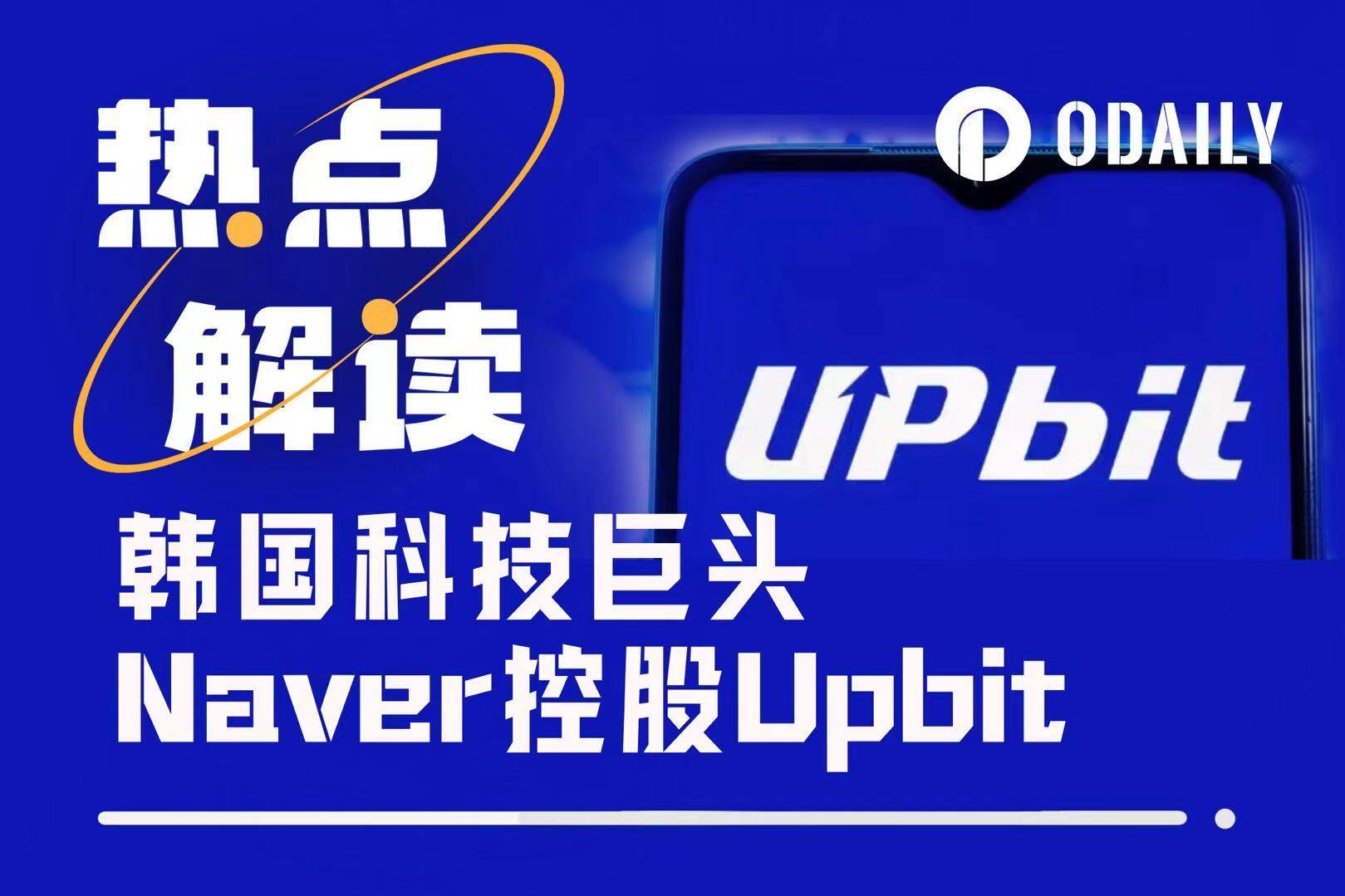Original | Odaily Planet Daily (@OdailyChina)

On September 25, Naver Financial announced a comprehensive share swap with Dunamu, the parent company of Upbit, planning to exchange new shares for the shares held by Dunamu's shareholders, ultimately achieving full ownership of Dunamu. Following the announcement, Naver's stock price surged rapidly, breaking through key resistance levels, with an intraday increase of up to 16%.
The reason this share swap could boost the stock price so significantly may stem from Naver's far-reaching layout in the Web 3 field.
From Payments to Crypto: Naver Financial's Transformation Journey
As the fintech subsidiary of South Korean internet giant Naver, Naver Financial was established in 2017, primarily responsible for operating payment services like Naver Pay. However, Naver's vision has not stopped at traditional fintech. As early as 2021, Naver demonstrated a strong interest in the cryptocurrency sector, attempting to acquire the mainstream South Korean cryptocurrency exchange Bithumb. Although this attempt ultimately did not succeed, it revealed its ambitions for digital assets.
In 2022, Naver further ventured into the NFT and metaverse fields, even investing approximately 100 billion Korean won (about 78.4 million USD) into the TVT No. 3 venture fund, which focuses on Web 3, SaaS, and B2C platforms. This series of actions clearly outlines Naver's strategic trajectory from traditional internet to Web 3 transformation.
Fast forward to July 2025, Dunamu confirmed its collaboration with Naver Pay to advance the Korean won stablecoin payment business. This project is led by Naver Pay, with Dunamu assisting, and plans to clarify cooperation details further after relevant regulations are established. Meanwhile, Naver Financial also acquired shares in Dunamu's unlisted stock trading platform Stockplus Unlisted, becoming its largest shareholder, which can be seen as a prelude to the share swap transaction between Dunamu and Naver.
This transaction will help Naver accelerate its entry into the stablecoin and digital asset payment sectors, essentially fulfilling its unaccomplished wish from the 2021 Bithumb transaction. From an industry perspective, this is also a milestone merger and acquisition in South Korea's technology and cryptocurrency sectors, marking the acceleration of traditional internet companies into digital finance and promoting the transformation of traditional payments to Web 3.
The Birth of the GIWA Chain: Upbit's Layer 2 Ambition
Dunamu, as the parent company of South Korea's largest cryptocurrency exchange Upbit, is not only a leader in South Korean crypto trading but also ranks among the top globally, possessing strong technological accumulation and market influence. Recently, Upbit has introduced a new narrative chip—GIWA Chain.
GIWA is built on the OP Stack, positioned as an Ethereum Layer 2, claiming to support 1-second block times and full EVM compatibility, allowing developers to directly migrate Solidity contracts and reuse Ethereum development tools. On the surface, this is a technical exploration aimed at lowering the barriers to Web 3 usage; but at a deeper level, Upbit hopes to regain control over ecological narratives and value capture through its self-built chain.
However, Upbit's move seems to have come a bit late. Looking globally, self-built chains by exchanges have become an industry trend. Binance's BNB Chain has long been a leading player in the crypto industry, and recently, the perpetual trading DEX Aster on its chain skyrocketed 60 times, igniting the entire Perp DEX sector and even helping the exchange's native token BNB break the 1,000 yuan mark; Coinbase's Base chain, launched a year ago, has also developed rapidly, even incubating major projects like PENGU.
Ultimately, centralized exchanges relying solely on transaction fees face a clear revenue ceiling; however, once they have their own chains, they can enter a longer-term and more imaginative growth curve through ecological project incubation, native token empowerment, and value accumulation of on-chain applications.
Of course, the key to this share swap transaction lies not only in Upbit but also in Naver's own payment network.
Naver Pay has over 30 million users, and Naver Shopping's transaction scale reaches as high as 50 trillion Korean won. If Naver issues stablecoins centered around the GIWA Chain and introduces stablecoins into this large-scale payment ecosystem, the two companies are expected to generate significant synergies.
Conclusion
From Naver Pay's payment services to Dunamu's exchange and blockchain technology, and to GIWA Chain's Layer 2 exploration, Naver is constructing a closed-loop strategy that spans payments, stablecoins, and public chains. This share swap is not only a capital transaction but also an accelerator for strategic transformation.
Against the backdrop of South Korea's gradually opening policies on digital assets, Naver undoubtedly holds a competitive edge. However, challenges remain. Can the GIWA Chain stand out in the Layer 2 race? Will Naver's ecological integration be successfully implemented? The answers to these questions will need to be tested by time.
免责声明:本文章仅代表作者个人观点,不代表本平台的立场和观点。本文章仅供信息分享,不构成对任何人的任何投资建议。用户与作者之间的任何争议,与本平台无关。如网页中刊载的文章或图片涉及侵权,请提供相关的权利证明和身份证明发送邮件到support@aicoin.com,本平台相关工作人员将会进行核查。



